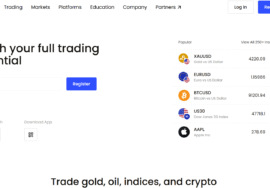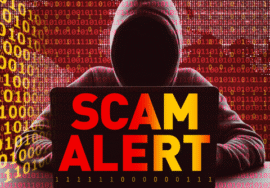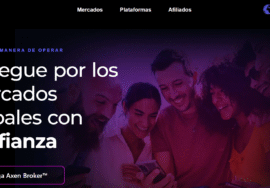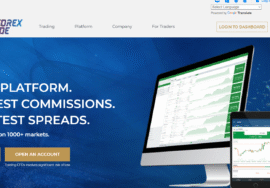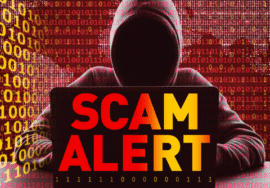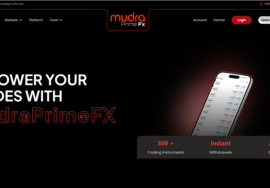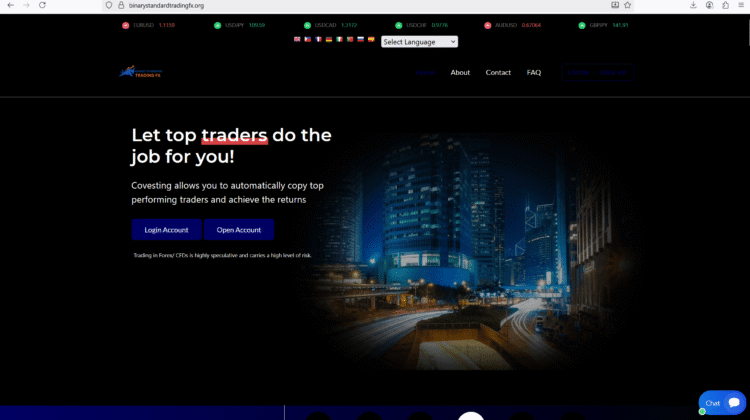
9 Explosive Reasons to Avoid the High-Risk Trap of BinaryStandardTradingFX.org
9 Explosive Reasons to Avoid the High-Risk Trap of BinaryStandardTradingFX.org
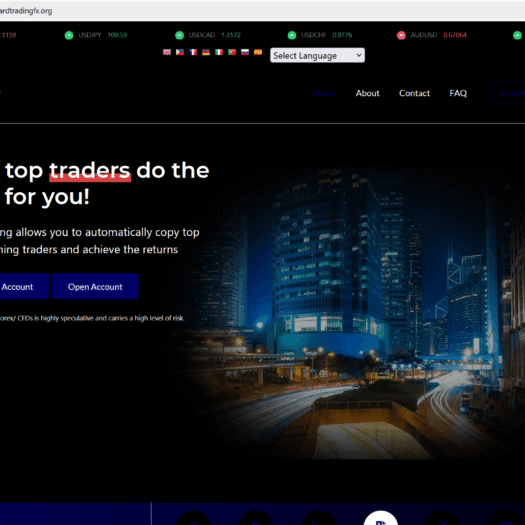
In 2025, scam brokers don’t look like scams. They look sleek, talk about “AI” and “DMA access,” and borrow the language of real financial firms. BinaryStandardTradingFX.org (Binary Standard Trading FX) fits that mold. A quick skim of the site suggests friendly education, “unparalleled trading conditions,” and a “thriving network of experts.” But the moment you examine the details that actually protect investors—regulation, ownership, custody, withdrawal rules—the façade cracks. Below is a field-tested breakdown, in your Element 1 format, of the nine biggest red flags surrounding this operation and how to protect yourself or your audience from avoidable losses.
1) Explosive Regulatory Red Flag: FCA “Unauthorised” Warning
The single most important datapoint: the UK Financial Conduct Authority (FCA) has placed Binary Standard Trading FX on its Warning List as not authorised to offer or promote financial services in the United Kingdom. That means no UK investor protections, no access to the Financial Ombudsman Service, and no FSCS compensation if funds go missing. The FCA does not add names lightly; the presence of this domain on the warning list is a stop-sign for prudent investors.
Translation: if you proceed, you are operating without a regulator’s safety net.
2) Powerful Mismatch: Site Boasts “ASIC Regulated” Claims — But No Proof
On its own pages, Binary Standard Trading FX trumpets lines like “best rated ASIC broker” and “Regulated by the Australian Securities and Investments Commission,” alongside eye-catching features (DMA access, 1:500 leverage, cash dividends on equities, etc.). Yet neither the site nor independent registries produce a verifiable ASIC license number, corporate entity name, or public filing tied to that claim. Pair that with the FCA’s explicit “unauthorised” warning and the conflict is glaring.
Rule of thumb: claims are marketing; license numbers are evidence. If a firm won’t give you the regulator, the license, and the legal entity in one sentence—and it checks out in the official register—assume the claim is unverified at best.
3) Opaque Ownership and Contactability: Who’s Actually Behind It?
Legitimate brokers are easy to pin down: an exact legal name, registered address, named officers, and traceable filings. Here, you get a generic contact form, a support email, and a floating U.S. address referenced by third-party reviews (e.g., 801 Century Park East, Los Angeles, CA). That mix—sparse contact channels on the site plus big-city addresses in external write-ups—is a classic concealment pattern. When disputes arise, opacity becomes your biggest enemy: no clear counterparty, no straightforward recourse.
4) Withdrawal Risk Signals: Crypto Rails + Fee Ambiguity
The FAQ touts “no deposit fees” and frames withdrawals via Bitcoin as incurring only a small “network fee.” In the real world, crypto rails are irreversible and a favorite for unlicensed brokers because they push finality onto the customer. Around such setups, victims frequently report a familiar progression: small early payouts to build confidence, followed by “compliance” holds, “tax clearance” fees, “liquidity” delays, or “verification deposits” once larger withdrawals are requested. Several industry trackers have already flagged this brand as unregulated and high-risk, explicitly citing the FCA warning.
Bottom line: always test a tiny deposit and an immediate withdrawal. If the exit isn’t frictionless on day one, it will not improve later when more money is at stake.
5) Clone-Template Footprint: Looks Like Other Flagged Sites
Independent monitoring outlets have documented a run of unlicensed brokers using the same website template—identical layouts and funnels, new logos. Binary Standard Trading FX appears in those roundups. Why it matters: template farms make it trivial to reboot under a fresh domain after warnings or bad reviews. You’re not dealing with a firm that will fix problems; you’re facing a design pattern built to rotate identities.
6) Reputation Check: Tiny, Thin, or Troubled Review Footprint
A handful of public reviews exist—but the signal is weak (very few posts, recent dates), and the pattern (complaints about service/withdrawals) aligns with the broader red flags above. Review count alone isn’t decisive, but when the regulator alert is already live, a thin or negative reputation footprint becomes corroboration—not an anomaly.
7) Product Risk By Association: “Binary” Branding & OTC Speculation
The brand name itself leans into binary vocabulary. As a class, binary options are considered high-risk and have a long history of fraud on offshore platforms. Even if this site’s product mix spans FX/CFDs/crypto, the binary-style, “all-or-nothing” ethos persists across many unregulated derivatives funnels. Regulators and educators have cautioned for years that binary-style bets are simple to market and dangerously easy to abuse on unlicensed venues.
Key insight: simplicity in presentation (“yes/no,” “win/lose”) is great for sales—but terrible for investor protection without strict oversight.
8) Sales Psychology Over Substance: FOMO, Authority Mimicry, VIP Tiers
Nothing about the site’s public footprint prioritizes the boring—but essential—details of trust: custody, segregation of client funds, named banks, audited statements, or recognized oversight. Instead, the emphasis rests on glossy selling points: “network of experts,” “unparalleled conditions,” “education,” and tantalizing leverage. Add common pressure levers—“limited-time tiers,” “bonus windows,” or “VIP” status for larger deposits—and you have a persuasion funnel, not a compliance program.
Tell: when a broker spends more effort on why you should hurry than on how your money is protected, step back.
9) Your 10-Step Protection Checklist (Use Before a Single Deposit)
- Match the exact domain (binarystandardtradingfx.org) in the regulator’s online register.
- Demand the legal entity (company name + number + registered address) and verify it in the jurisdiction’s corporate registry.
- Get the license number and confirm it on the regulator’s site—don’t accept screenshots.
- Ask who holds client money (bank/custodian name) and whether accounts are segregated.
- Request third-party audits (recent, named, and independently verifiable).
- Read the Terms for unilateral freeze powers, “release fees,” or internal-only dispute rules.
- Start micro: deposit the minimum possible, then test a withdrawal immediately.
- Avoid being pushed to crypto rails or side-loaded apps that bypass normal safeguards.
- Archive everything (emails, chats, dashboard screenshots, TXIDs, bank receipts).
- If a regulator has warned about the site, stop. There’s nothing left to “figure out.”
Conclusion
The most telling fact about BinaryStandardTradingFX.org is not its marketing—it’s the regulatory status. When a major authority like the FCA publicly warns that a firm is unauthorised, prudent investors should take that as a final answer, not an invitation to negotiate. Authorization isn’t a cosmetic label; it’s the framework that governs capital custody, dispute resolution, audits, and the right to operate. Without it, your recourse shrinks to almost nothing.
Everything else you observe only reinforces that center of gravity. The website’s unverified “ASIC regulated” claim lacks the bare minimum—no identifiable license number, no named Australian corporate entity, no searchable record in official registers. The contactability problem—generic forms, a single support email, and a glossy big-city address cited in third-party reviews—makes accountability look like a moving target. The withdrawal setup leans on crypto rails and vague fee language; industry trackers already flag the brand as unregulated and risky. And the clone-template footprint implies interchangeability: if this brand burns, another mask awaits.
For investors, that cocktail of signals should trigger discipline, not doubt. Before any commitment, the only acceptable proof is verification in an official register—regulator, license, legal entity—matched to the exact domain you’re using. If those three don’t line up, step away. If they do, keep testing: custody clarity, audited statements, and a small withdrawal on day one are the real-world checks that separate pitch from practice. A legit broker will pass these effortlessly. An unregulated funnel will fight or stall you at every turn.
If you have already engaged with Binary Standard Trading FX:
- Stop new deposits immediately.
- Export evidence: chats, emails, dashboard screenshots, transactions, wallet addresses.
- Attempt a small, documented withdrawal for evidentiary value.
- Notify your bank or payment provider to explore reversals/chargebacks where possible.
- Report the case to your national regulator and, if relevant, to the FCA.
- Be cautious of “recovery” approaches that demand new upfront fees—this is a common second-stage scam.
In a market crowded with noise, skepticism isn’t negativity—it’s risk management. Trust should be earned by regulation, transparency, and successful exits, not by taglines, sliders, or stock photos of traders at glowing terminals. Let BinaryStandardTradingFX.org serve as a reminder: when presentation is loud and proof is quiet, listen to the silence. Your capital—and your peace of mind—are worth that restraint.


